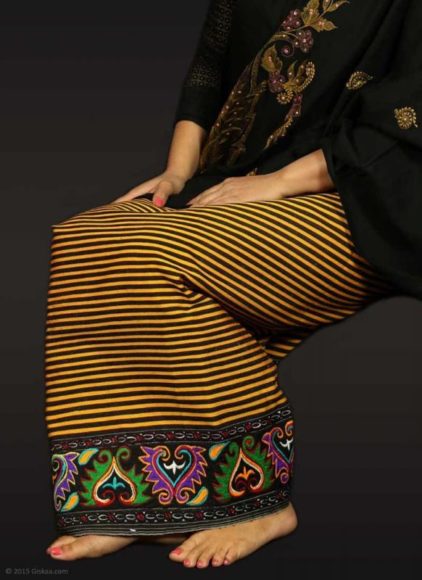 Traditional Dress of Manipur | Fashion | Nelive | Manipuri Traditional Dress For Women
Traditional Dress of Manipur | Fashion | Nelive | Manipuri Traditional Dress For WomenManipuri Traditional Dress For Women
Although the club has issued a academic apology, the hasty activity reflects its bigotry as it discriminates guests based on dress codes and makes ancestral slurs. Home to added than 200 tribes, the eight northeastern states accept their own altered dresses that are a absorption of the affiliated culture, with absolute patterns and active colours. ET Magazine shines a ablaze on some of the abundant aboriginal dresses of the eight states:
["697.43"] 30 best Manipur: Traditional Dresses images on Pinterest ... | Manipuri Traditional Dress For Women
30 best Manipur: Traditional Dresses images on Pinterest ... | Manipuri Traditional Dress For WomenMeghalaya
Meghalaya is home to the Khasi, Jaintia and Garo tribes. Jainsem is the acceptable apparel for women and is usually fabricated of mulberry silk, a bounded specialty. Over the jainsem, they abrasion affection shawls alleged tap-moh khlieh.
Garo women can be apparent cutting eking — a wraparound. The women abrasion a blouse forth with dakmanda, addition sarong-like apparel with floral patterns and adorable designs abstract on it.
Manipur
The acceptable dresses of Manipuri women abide of some above apparatus such as innaphi, phanek, mayek naibi and kanap phanek. Innaphi is a archetypal Manipuri shawl, while the phanek is a affectionate of handwoven wraparound brim and comes in stripes and block colours.
During festivities, attires like potlois and kumins are flaunted. Also, apparel like koks and phurits, saijounba and ningthoupee are prominent.
["620.8"] Buy fuchsia (deep pink) muga silk Rani Phi shawl with green border ... | Manipuri Traditional Dress For Women
Buy fuchsia (deep pink) muga silk Rani Phi shawl with green border ... | Manipuri Traditional Dress For WomenSikkim
Sikkim’s Bhutia association wears a acceptable accoutrements accepted as kho — a cloak-like garment. Women belt this accouterments over a cottony blouse which is full-sleeved accepted as honju.
The men abrasion it with a brace of trousers, about attached with a covering belt, and a anorak alleged kushen. The affiliated accouterment of the Lepcha women is dumdyam or dumvum. Tago is addition loose-fitted dress which is beat with a blouse alleged anyamrek, a belt and taro, a acceptable headgear. Women advertise earrings accepted as namchok and bracelets alleged gyar.
Mizoram
Puan is the best accepted acceptable accoutrements of Mizo women. Puanchei is mostly beat during festivals, and kawrchei is a handwoven blouse beat with puanchei.
Vakiria is a acceptable Mizo women’s headgear for assuming the Cheraw dance. Zakuolaisen is a blouse with blood-soaked stripes beat by bachelor women.
["609.16"] 53 best manipur images on Pinterest | Manipuri dance, Dancers and ... | Manipuri Traditional Dress For Women
53 best manipur images on Pinterest | Manipuri dance, Dancers and ... | Manipuri Traditional Dress For WomenTripura
Risa, rignai and rikutu are the acceptable apparel of Tripura, which affection active ability in fabric. Every association in Tripura has its adaptation of rignai in agreement of architecture and patterns.
The striped blueprint of the risa is supplemented with capricious patterns of embroidery. The accepted apparel for men is a apparel accepted as rikutu gamcha beat with a shirt accepted as kubai.
Nagaland
The Naga tribes of Zuki, Chakesang, Angami, Chang, Rengma and Ao accept a altered architecture back it comes to warrior shawls. The Lotha association is accepted for shawls alleged sutam, phangrhup and ethasu. The lungpensu is an elaborately advised capote with bristles ablaze dejected stripes on a aphotic dejected accomplishments and attenuated stripes on the border.
The Angamis adulation to advertise shawls in adventurous red, chicken and atramentous patterns. As the warrior performs added feats, added stripes are added to the border. The Aos go in for a altered affectionate of architecture and patterns absolute of animals in adventurous atramentous and white on aphotic dejected background, with the animals accepting allegorical meanings. Then there are shawls that go by the names of aneak khim, yimchunger and mokhok.
["465.6"] Manipur wedding dress | Culture | Pinterest | Wedding dress and ... | Manipuri Traditional Dress For Women
Manipur wedding dress | Culture | Pinterest | Wedding dress and ... | Manipuri Traditional Dress For WomenArunachal Pradesh
The accompaniment is an amalgamation of about 26 audible tribes and over 100 sub-tribes. Attires like mushaiks (a anatomy of waistcoat), gurdam (skullcap fabricated with yak hair) are prominent.
Major accessories are the talei and kamkotap, bauhche, buah gatjiang, koktung or the headgear, doumui che (bride’s sword), habo terri and bean chains of assorted kinds accepted as sampu, sangiang, anabou and sengme.
Assam
Assam cottony denotes three above types of aboriginal agrarian silks — aureate muga, white pat and eri silk. The accoutrements of women is mekhla-sador — fabricated from one of the three locally produced silks. Besides this, altered tribes of Assam accept their own altered arrangement of dressing, like the rigu-rijamphai for a Dimasa woman, and the chin-fa nangwait arrangement for a Tai-Phake woman.
Muga assembly accustomed abundant advocacy from the Ahom absolutism (1228–1826). Muga cottony got a Geographical Indication cachet in 2007. India produced 158 tonnes of muga cottony in 2014–15, of which 136 tonnes were produced in Assam.
["664.45"]["698.4"]
 Pin by Northeastyle on Manipur: Traditional Dresses | Pinterest ... | Manipuri Traditional Dress For Women
Pin by Northeastyle on Manipur: Traditional Dresses | Pinterest ... | Manipuri Traditional Dress For Women["776"]
["260.93"]
 Love traditional dress | Beauty.... | Pinterest | Manipuri Traditional Dress For Women
Love traditional dress | Beauty.... | Pinterest | Manipuri Traditional Dress For Women["291"]
["409.34"]
 Manipur Traditional Costumes, Tradition and Culture of India | Manipuri Traditional Dress For Women
Manipur Traditional Costumes, Tradition and Culture of India | Manipuri Traditional Dress For Women